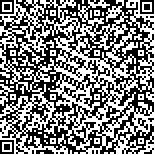| This article has been:Browse 560Times Download 527Times |

scan it! |
|
|
| DOI:10.13522/j.cnki.ggps.2022198 |
|
| Suitable Irrigation Scheduling in Winter-spring Fallow Period for Leaching Salt Out of Root Zone of Cotton in Southern Xinjiang |
|
LI Yong, LI Lin, WANG Feng, LIU Liang, LUO Xijuan, WANG Xingpeng
|
|
1. College of Water Conservancy and Architecture Engineering, Tarim University, Alaer 843300, China;
2. Institute of Farmland Irrigation, Chinese Academy of Agricultural Sciences/
Key Laboratory of Crop Water Use and Regulation, Ministry of Agriculture and Rural Affairs, Xinxiang 453002, China
|
| Abstract: |
| 【Objective】 Soil salinity is an abiotic challenge facing agricultural production in Xinjiang. One solution to ameliorate the impact of soil salinity is to leach the salt out of the root zone in winter-spring period after harvest but before planting. The purpose of this paper is to experimentally study the suitable irrigation scheduling to achieve that goal. 【Method】The experiment was conducted in a field where irrigation amount in the winter varied from 0 to 3 600 m3/hm2, combined with a spring irrigation with the amount 300 m3/hm2. In each treatment, we measured the change in water and salt contents at different soil depths.【Result】①The winter irrigation affected water storage in the soil, especially in the early stage and in the top 0~30 cm soil layer where the irrigation significantly increased the soil moisture content, regardless of the irrigation amount. The increase was followed by a decline until commencement of the spring irrigation. The soil moisture content in 0~100 cm soil layer irrigated by 600 m3/hm2 of water in the winter was lower than that before the irrigation; a supplementary spring irrigation boosted soil moisture content in the 0~30 cm soil layer by more than 15.66% compared to that with only one winter irrigation at 1 800 m3/hm2. ②In the early stage after the winter irrigation, salt leaching depth increased with the increase in irrigation amount; when the irrigation amount was 2 400 m3/hm2 or above, the leaching depth was as deep as 100 cm. However, the prolonged drying season prior to the spring irrigation drove salt ascending, regardless of winter irrigation amount. The supplementary spring irrigation leached salt, especially from the 0~30 cm soil layer where the desalinization was most significant. ③Combining a 2 400 m3/hm2 winter irrigation and a 300 m3/hm2 spring irrigation desalinated the 0~30 cm and 0~100 cm soil layers most efficiently. ④After the spring irrigation, the average electric conductivity of the 0~30 cm and 0~10 cm soil layer was 1.40 mS/cm and 1.30 mS/cm, respectively, and the associated total salt content were 3.65 and 3.32 g/kg, respectively, lower than the critical salt content for cotton emergence (3.7 g/kg).【Conclusion】Considering water saving, desalination and soil water in the 0~30 cm soil layer after the spring irrigation, irrigating 2 400 m3/hm2 in winter combined with a 300 m3/hm2 irrigation in spring is optimal for cotton growth in the studied region. |
| Key words: winter irrigation; spring irrigation; water salt transport; salt leaching; winter irrigation quota |
|
|